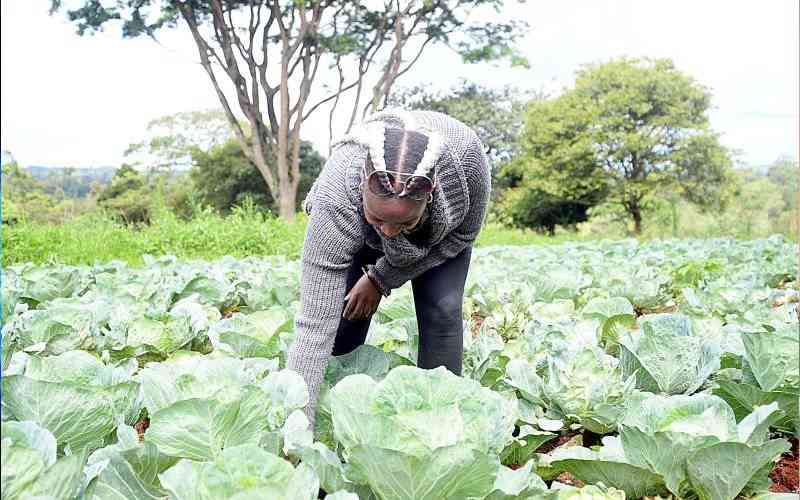By LILIAN ALUANGA
Agricultural projects, changing climate and a rise in population are some of the factors being blamed for the drying of one of Kenya’s top fresh water wetlands.
Known for its rich diversity of birdlife, wild animals and plants, the Tana Delta wetland is home to thousands of pastoralists, farmers and fisherfolk whose livelihoods depend on activities that are supported by this ecological feature, which is now at risk of being turned into one huge farmland.
At Dide Waride, a wetland area, Hussein Gona is worried that herds of the pastoralist Orma community in the area may not have enough pasture this season.
Gona is standing on a dry portion of land and points to hundreds of cattle, sheep and goats scattered across hundreds of acres of land. |
A man in a canoe in Lake Moa. The lake is likely to dry up after waters from River Tana were diverted for irrigation. [PHOTO: LILIAN ALUANGA/STANDARD] |
"Usually, during the rainy season, goats can stand in water that is chest-deep," he says. When the rains subside the area becomes an important dry season grazing site for hundreds of thousands of livestock.
Frequent droughts are, however, posing a new challenge as herds of livestock that are not resident to the area converge in the delta.
"Herders are coming from elsewhere to graze their cattle here. They are coming from as far as Ethiopia, Garissa, Wajir, Mandera, and Bura. If this is not controlled we will not have much left for our livestock," adds Gona.
"All the water is gone. I blame irrigation projects in this area to some extent, because I believe they have sucked the area dry," he says of the now seasonal wetland.
In Salama location, farmers are blaming the canals and dykes constructed in the 1990s to support irrigation projects in the area.
Ox-bow lake
There is talk that a good portion of land that was converted into farmlands was once part of the wetland.
"Flood waters had natural channels through which they would flow into the wetlands," says a farmer in the area. The waters often provided good breeding grounds for fish and other aquatic life.
Along the shores of Lake Moa, fisherfolk are counting their losses as a result of dwindling fish stocks in the once raging waters of the Tana that fed the ox-bow lake.
Stay informed. Subscribe to our newsletter
"It is not the same anymore. We now have to seek other means of survival like doing odd jobs in surrounding villages," says Joseph Otieno.
Also at risk are the dozens of bird species, hippos and crocodiles dependant on the Tana’s wetlands. There are said to be over 300 bird species, which include the endangered Basra reed warbler and Tana River cisticola. Other species are ibises, herons, kingfisher and pelicans. The wetlands also support mangrove forests, grasslands, marshes, woodlands, lakes and bushland.
At the edge of Mpeketoni village in Ozi location, a section of the land on which mangrove trees stands looks dry and cracked.
"This is just a fraction of what is really going on here," says Omar Ngama.
Salinity in the area has been attributed to a rise in sea level, which some environmentalists link to global climate change. But there is also no denying that the forest has not been spared degradation.
Back in Dide Waride, Gona is musing over the fate of herds that now have to walk dozens of kilometres in search of water and pasture and the effect this may have on their market value and productivity.
"Over 60 per cent of the meat in Mombasa, Malindi and other areas in Coast Province is supplied by these herds. If they die then that supply is also cut off," he says.
Gona, like many other pastoralists, is not too keen on farming and projects geared towards it.
"We have seen irrigation projects started here. They come and promise us jobs and a better life, but in the end we do not benefit," he says.
Plans to put thousands of hectares under crops like sugarcane and others geared towards the production of biofuels are worrying environmentalists, who insist the delta must be protected at all costs.
Says Prof Odada of the University of Nairobi: "Some of these crops require a lot of water and we must think critically about the effects of growing them in large scale in a wetland area."
 The Standard Group Plc is a
multi-media organization with investments in media platforms spanning newspaper
print operations, television, radio broadcasting, digital and online services. The
Standard Group is recognized as a leading multi-media house in Kenya with a key
influence in matters of national and international interest.
The Standard Group Plc is a
multi-media organization with investments in media platforms spanning newspaper
print operations, television, radio broadcasting, digital and online services. The
Standard Group is recognized as a leading multi-media house in Kenya with a key
influence in matters of national and international interest.
 The Standard Group Plc is a
multi-media organization with investments in media platforms spanning newspaper
print operations, television, radio broadcasting, digital and online services. The
Standard Group is recognized as a leading multi-media house in Kenya with a key
influence in matters of national and international interest.
The Standard Group Plc is a
multi-media organization with investments in media platforms spanning newspaper
print operations, television, radio broadcasting, digital and online services. The
Standard Group is recognized as a leading multi-media house in Kenya with a key
influence in matters of national and international interest.









